쉬운 목차
If you want to be great at problem solving and solve any problem, you’ve come to the right place.
Problem solving is a skill that everybody knows is important, but nobody knows what it really means or how to develop.
I created this blog to help you with both.
So why should you follow my advice on problem solving?
With the technique that I share with you in my blog I was…
- Scouted by the CEO office of a large Korean Conglomerate to work in corporate strategy and then again a second time by a reputed Japanese IT giant, where I am currently leading department business strategy
- Given an offer to work for a consulting firm (Boston Consulting Group and then Arthur D. Little)
It is also a plus that I…
- Successfully negotiated my salary and doubled it within a year and was offered early promotion at each and every one of the companies I was with
- Achieved all this BEFORE graduating from my undergrad studies
The reason I mention this is not to brag but to show you that the content I have to share is reliable and actionable.
This ultimate guide will cover all there is to know about problem solving.
Make sure to give this guide a thorough read, then save it to your bookmarks and come back to it later.
Ready?
Strap in. This is going be a long and fun ride.
Why problem solving?
Before we dive into the step-by-step guide on how to solve any problem, let’s cover a few basic things.
There are many reasons that might have led you to this blog – to find a job, to super-charge your career, to change industries or roles – the list is endless.
But if there is one thing I can promise, it is that knowing how to solve problems will give you an incredible edge over your peers and help you stay ahead of the pack.
Also, you may rest assured that your problem solving skill will be valued in all settings, both business and personal, now and in the future.
There are 5 main reasons why you should build this skill.
1. Problem solving skills cannot be automated

The 4th industrial revolution is bringing a wave of both good and bad changes.
Good because we now live in a more connected and convenient world.
Bad because along with the increase in connectivity and convenience many well-reputed jobs are disappearing.
Work is more than just a source of income. We spend at-least 8 hours at it every weekday and like it or not, it is an integral part of our life.
Unfortunately, 50% of all the work activities are technically automatable and it is expected that the work of 400 million people will be displaced by 2030.
Fortunately, problem solving will still be strongly relevant.
We will learn more about this later on but problem solving is not a simple numbers but rather a human game with social and emotional factors are at play.
This guarantees that problem solving to be a relevant skill for generations to come.
2. There is high demand for problem solving and it pays well

37% of HR professionals surveyed reported problem solving as the number one area of missing soft skills. This is followed by an outstanding 32% on the ability to deal with complexity and ambiguity.

Not only is it in high demand now but is also forecasted to rise by 2030.
It also pays well.

based on data from Payscale.com
The high demand for problem solving and its scarcity in the job market guarantees that it pays well.
There is high correlation between problem solving and strategy which is why positions that require high problem solving skills have words that include ‘strategy’, ‘planning’, ‘business’, and ‘management’.
These are jobs you could aim for once you become proficient in problem solving, you can start aiming for jobs listed above.
3. Problem solving is the back-bone of powerful Excel and persuasive Powerpoint

Mastering problem solving will enable you to build strong evidence with Excel and present your solution with Powerpoint that will captivate your audience.
Unfortunately, too many people tackle Excel and Powerpoint without a solid foundation on problem solving.
This creates inefficiencies that spell only disaster. You spend a great amount of time and effort making something but with very little impact.
Knowing the ins and outs of problem solving, will make you incredibly efficient.
It will boost your work speed so you can get more things done, spend less time at the office, and focus on what is really important for you.
It will make your output impactful and open doors to early promotion, salary boosts, and offers from scouts.
Excel or Powerpoint without structured problem solving skills is like going to war with a pitch fork while the enemy is armed with an AK-47.
4. ANYBODY can be good at problem solving

You heard me. Anybody can do it.
The only pre-requisite is knowing how to add, subtract, multiply and divide. If you are able to do those four things, you are ready.
The most common reason why most people don’t develop this skill is not because they can’t but because they don’t know how.
Problem solving is not taught in university and is mostly made available for only a select few people at top universities.
Consulting firms, also known as problem solving boot-camp, usually only accept top graduates from Ivy League schools.
However, after having gone through the battle of building the skill myself, I cannot stress enough how nonsensical it is to think that problem solving is only for a select few.
It took me around 3 months of hard work to feel comfortable with problem solving. That is all it takes. Time and grit.
Now that we understood the benefits of problem solving, lets explore what problem solving really means.
What is problem solving?
It’s all about the person

We often think of problems as something objective, abstract and lifeless.
They definitely sound this way. Let’s look at a few together:
- The machine broke down
- We are selling less than last year
- Cost of raw material is rising
- We are losing market share to competition
- Traffic to our site is falling
Most of these problems are just numbers on a screen.
However, you must realize that a problem doesn’t end at the screen.
The real problem is the sleepless nights of the CEO trying to save his company, the frightened manager who has to orchestrate his employees to come up with a solution, and the terrified employee whose performance for next quarter will determine whether he gets to keep his job.
What you are trying to solve is not a simple number problem.
It is about bringing peace-of-mind to the people who are suffering from the problem.
People come first and problems come second.
Solving a problem usually requires the involvement of numerous stakeholders.
Driving towards a solution ignoring the emotions of everybody else will not only hinder your problem solving, it might make it impossible.
Problem solving, therefore, is an innately human activity and something that machines cannot replicate. That is why problem solving skills is and forever will be relevant as long as humans are relevant.
Always remember, all problems, no matter how quantitative and technical, are linked to people, and people are emotional creatures.
Addressing the emotional needs of people is what will lead to an A+ solution.
Breaking things with problem solving

The best summary to problem solving is breaking down big problems into small chunks, finding the chunk that is causing the most trouble, and fixing it.
A mistake that a lot of people make is thinking that problem solving is about building solutions.
Solutions, however, are easier to make if the core problem is clearly identified.
What often makes problem solving a real headache is the process of finding the core problem.
Problems come in many shapes and sizes making it incredibly difficult to break down into logical chunks.
Even with the chunks in front of you, it is difficult to find which one of them are causing the most trouble.
Can I really be good at problem solving?
Yes, and all it takes is time and dedication.
In other words, you can’t expect to master problem solving just by quickly reading through this blog.
But there is nothing to worry.
You will become better at it the more you practice, and the best part is that it’s great fun once you get the hang of it.
Also, I will be here to help you through any obstacles. Feel free to leave a comment or provide feedback at the bottom of this post and I will try getting back to you as soon as possible.
How to solve any problem
Now that we covered the ‘why’ and ‘what’ of problem solving, it’s time to move on to the ‘how’.
How to read this guide
I broke down problem solving into 6 steps:
- Step 1: Understand the problem
- Step 2: Find out the problem context
- Step 3: Define the scope of solution
- Step 4: Analyze
- Step 5: Build your solution
- Step 6: Present
I’ve also added a Step 0 covering talented problem solver’s dirty little secret on how to make problem solving quicker, easier, and more structured.
Lastly, I’ve included a Bonus section where I will be introducing basic research techniques to help you find sound data to back up your solution.
There might be parts of the 5 step guide that might have you scratching your head.
If you ever face this situation, I highly recommend that you don’t give up and just plow through the reading.
At a later time read a second time the part you struggled with and make sure you try your best to digest the content and make it yours.
Though you might think that the problem you are facing might be unique, I guarantee that you can find a solution by applying my framework.
Also, remember you need consistent practice in addition to digesting the content in this blog to truly master problem solving.
You can invent problems and work backward towards a solution, or you can directly engage in a real world problem that you yourself or those around you are facing.
A great way to be comfortable with problem solving is to be good at guesstimation. You can find more infomration on it here.
Step 0: Talented problem solver’s dirty little secret

How they do it
Would you like to know how talented problem solvers are able to quickly and accurately solve problems?
They set an answer first and then spend the rest of the time digging up evidence to prove or disprove it.
They build their solution top-down rather than gathering facts to find a conclusion.
This tactic is often used in professional industries such as law firms, consulting firms, and investment banking.
It is used because many times there actually is a fixed solution to a problem!
Consultants

A CEO of a large company wants to fire a part of his workforce to lower cost. He thinks 20% would be adequate but does not have the evidence to support his decision.
He knows that there will be a huge riot if he leads the firing process so he hires a bunch of smart consultants so that they can do the nitty-gritty job of crunching the numbers to support the his decision.
Investment Bankers

A CEO wants to sell one of his subsidiaries at a price he has in mind. There is no logical evidence to back up this price.
He knows that nobody will be interested in buying his company at the price he has in mind so he hires smart investment bankers to build the logic to back up his price.
Lawyers

Lawyers… well, it’s their job to assume their client is innocent even though they might not be!
This might leave a bad taste in your mouth.
But the reason I share this with you is because there is something extremely attractive about the answer-first approach.
Why use an answer-first approach?
Answer-first is not only used when there already is a fixed answer. It can be used just the same when there is no clear answer.
The reason why the answer-first approach is a thousand times better than gathering evidence and finding a solution is because it is fast, accurate, and convincing.
Faster
It is faster because you bypass the need to go through all the facts. We would be overwhelmed if we had to read and analyze ALL the information out there.
Focused
The answer-first approach assumes we have a solution. To check if we are right or wrong we would need to collect evidence that would prove or disprove our answer.
The information that we collect in this case would be limited to the ones that are relevant to our proposed answer. This guarantees that the pool of information we need to dig into is narrow and focused.
If our proposed answer is proven false by our evidence, we can now propose a more sensible answer with the information we collected previously.
Repeat until you get closer to the answer.
Convincing
It is convincing because the supporting evidence to your proposed answer is much more focused; therefore, more thorough and comprehensive.
Instead of spending our time to look into EVERY information, we spend it to dig deeper into the information we NEED.
Time is finite resource and we need to make the most of it.
The answer-first approach will not only help us stay focused but also speed up the problem solving process and make our result more convincing.
Another way to explain the answer-first approach is hypothesis-driven thinking.
It is to say: “X is true if i, ii, iii are true”
X would be the answer and i, ii, iii the facts that would need to be true to prove that X is correct.
Though the answer-first approach is most actively used in “[Step 3] Analyze”, it is imperative that we keep this mindset throughout the entire problem solving journey.
Step 1: Understand the problem
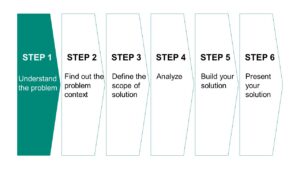
Your friend from high-school, Jeff, comes to you one day with a problem. He is now a successful man working as the President of a large toy company called We Love Toys.
This is what he had to say to you:

“I can’t get much sleep these days… Profits are down for our company. Our main product, plastic action figures, aren’t selling as they used to in the past. Our other main product, fluffy dolls, is doing just fine. What do you think I can do to make things better?”
What would be the best way to solve this problem?
Avoid the instinctive answer

If there is a voice inside your clamoring ‘we should stop selling plastic action figures and focus on selling more fluffy dolls!’, I’d highly recommend that you keep that thought to yourself.
It is great to have a hypothesis but it would be a terrible idea to blurt it out infront of your client.
Have in mind that your client, in this case Jeff, is somebody who knows the ins and outs of his industry and a pretty good idea of the problem itself.
The reason he came to you is because he couldn’t find a solution even with all his experience and expertise.
Blurting out a half-baked idea not only will make you look unprofessional but might even have Jeff think you are an egg head.
Consider him out of your life because he will probably never come back to you with a problem.
You should not be shouting out possible answers at the initial stages of problem solving.
What you should do is dig deeper into the problem context.
Avoid the instinctive answer.
Check that you correctly understand the problem
First thing you should do right off the bat is to check if you correctly understood what your client, Jeff, is saying.
You might have misheard something or Jeff might have forgotten to share some important information with you.
The best way to check is to repeat what your client said in your own words.
So, this is how that would sound like:

“Hey Jeff. Let me see if I accurately understand the problem. We Love Toys went through a profit dip. You mostly manufacture fluffy dolls and plastic action figures. While fluffy dolls sell ok, seems like plastic action figures aren’t selling so well. Is my understanding of the problem correct?”
Clarifying the problem statement will guarantee that you and the speaker are aligned on the issue at hand and avoid miscommunication down the road.
Check that you correctly understood the problem.
Keep it quantitative

Try understanding the problem in numerical terms, not words.
Numbers are more accurate than words because words can mean something different for every person.
“A lot of money” can mean $100,000 to an average person but that would be nothing more than a drop in the ocean for the CEO of a Forbes 500 company.
Similarly a 0.2% commission for managing somebody else’s money might not seem a lot to you, but if the asset under management is $1 billion… you get the idea.
It doesn’t end there. Numbers can also be deceptive so it is important to understand the context.
A dip in $1 million sales might sound terrible but it might just be a 0.1% drop for a Forbes 500 company making $1 billion.
Therefore, when you ask for quantitative information, it’s nice to have percentage information in addition to whole numbers. That is because percentages are context-based.
So, these would be some of the questions you’d be asking Jeff:
- By how did profit decrease? What would that profit drop be in terms of percentage?
- When did you first notice profits dropping?
- Is the drop in profit something that only your company is facing or is it an industry problem?
Let’s say you asked these questions and got the following reply from Jeff:
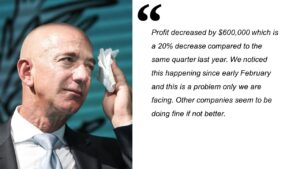
“Profit decreased by $600,000 which is a 20% decrease compared to the same quarter last year. We noticed this happening since early February and this is a problem only we are facing. Other companies seem to be doing fine if not better.”
Knowing the number helps you size the problem and better understand the problem’s context.
Most problems can be translated into numbers.
For example:
- “we are not making enough money” – revenue problem
- “we are losing money with every unit of production” – cost problem
- “people simply aren’t visiting our site any more” – traffic problem
- “a lot of people visit our site but nobody is buying from us” – conversion problem
- “people buy from us but we get a lot of complaint emails” – net promoter score problem
Always remember, keep the problem quantitative.
Note that people are emotional creatures

A general truth about people is that most are not very honest about presenting their problems.
Most of the time it is either because they are embarassed or have too much pride – it’s difficult for them to accept they have a problem in the first place.
Jeff, for example, makes it seem as if his key concern is related to the profit slide caused by plastic action figures, but you shouldn’t be so naive as to completely believe this.
Yes, I said it. Always second guess your client’s intention!
You should ask yourself:
‘Is that the real problem?’
‘Might there be something that he is not telling me?’
You must be smarter than the person you are trying to help to be truly helpful.
The tricky part is to second guess without making your client feel like an idiot.
A subtle way to check is to ask this simple question:

“Jeff, seems that you are concerned with declining profit… but is there any other thing I should be aware of?”
Just asking this open ended question can lead you to a gold mine.
Not always, but you could get this kind of surprising reply:
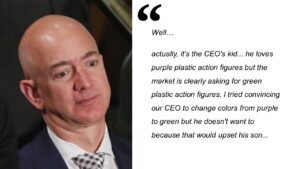
“Well…
actually, it’s the CEO’s kid… he loves purple plastic action figures but the market is clearly asking for green plastic action figures. I tried convincing our CEO to change colors from purple to green but he doesn’t want to because that would upset his son…”
Who would have guessed?
We discovered the human element behind the profit problem: the CEO’s son
It was probably embarassing for Jeff to admit that a kid is the source of his core concern, but he did anyways because you asked.
Don’t expect to get this kind of golden nugget every time but it never hurts to check.
By doing so, you can save a lot of time and additional layers of complexity down the road.
The example above was just to make a point so don’t worry. We will not entertain the CEO’s son in the rest of the blog.
People are emotional and might hide important information from you unless you ask for it.
Step 2: Find out the problem context
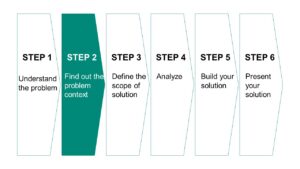
You are not an expert
Let’s be real. You are not a toy company expert.
But you know what?
You don’t have to be a toy company expert to solve problems.
The reason why industry experts hire consultants for millions of dollars is not because they know more about the industry – who would know better than the people who were at it their entire lives?
It is because consultants approach the problem from a different angle that provides greater insight.
But before they can get to a solution, they must study and understand the big picture.
The best way to do so is to ask questions to your client, another industry expert, or desktop research.
It is ok if you don’t have the knowledge and experience as the person you are trying to help.
Feel comfortable with not knowing everything. It is expected.
Avoid getting bogged down in detail and focus on understanding the big picture.
Remember, you are not an expert and it’s ok.
Ask clarification questions
Let’s look back at what Jeff said:
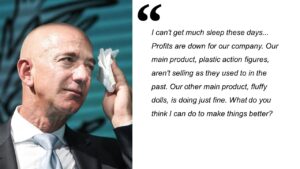
“I can’t get much sleep these days… Profits are down for our company. Our main product, plastic action figures, aren’t selling as they used to in the past. Our other main product, fluffy dolls, is doing just fine. What do you think I can do to make things better?”
Even though the problem statement seems clear, it actually isn’t. There is still a lot in the dark.
To ask relevant questions, focus on key words.
For example, the 2 words below stood out for me:

“I can’t get much sleep these days… Profits are down for our company. Our main product, plastic action figures, aren’t selling as they used to in the past. Our other main product, fluffy dolls, is doing just fine. What do you think I can do to make things better?“
The word company made me think are other toy companies facing a similar profit crunch?
The word product also got me thinking. How much are you selling each product? The two main products are plastic action figures and fluffy dolls. Is there any other product that we should be aware of?
The word selling made me think of sales channel and also the people who end up buying the product, customers. Is Jeff’s company selling both online and offline? Who are they selling to and what do they look for when they buy toys?
These are called clarification questions and serve to clarify the context of the problem from a qualitative perspective.
Let’s say you asked these questions and got the following reply from Jeff:

“This profit crunch is only our problem. Fluffy dolls and plastic action figures account for almost 90% of our sales so makes sense to focus there. Fluffly dolls cost $29.99 and plastic action figures cost $24.99. We only sell our toys through offline distributors. Customers are usually young couples who buy for their children aged 6-11.“
Ask: why, what, how, who, when
The core problem can usually be found in the four buckets we touched on above: company, product, sales channel, and customer
The problem you are facing might not have an exact company, product, sales channel or customer.
In that case, it is helpful to take those categories and make them a bit more abstract.
For example:
Think of company as yourself or the institution you are part of. It can be the way you operate, your business model (how you earn money), or the key differentiators that makes you special.
Think of product as what you have. It can be a skill, an asset, a physical product or a service.
Think of customers as the target, a third person or entity you are interacting with and is on the other side.
Think of channel as the means to get to your customer. Medium can be anything from online/offline to sea/air.
Customer first
Usually, I would recommend that you always start by asking questions related to the customer.
Understanding who they are, what they like and dislike, and why they behave the way they do will give you the most valuable insight.
And it makes sense.
If you own a business and you aren’t making money, it’s probably because customers aren’t buying from you.
If traffic to your site is decreasing, it’s probably because users don’t like your site or lost interest in what you have to offer.
Once you start asking questions about customers, you will have follow-up questions that will slide into other buckets.
More examples
I admit. All this might sounds damn confusing if you are new to this.
So let me provide you with a few questions you can ask facing different problems.
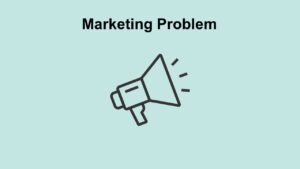
how can I get more traffic to our website
- [Customer] Who are the people who normally see our content?
- [Channel] How are we reaching out to our viewers?
- [Product] What is the nature of our content? what value are we giving to our viewers?
- [Business] Is there anything that sets our website apart from the competition?
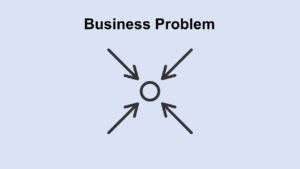
We secured $2 million for new business development. What project should we focus on?
- [Customer] Should we target B2C customers or B2B customers?
- [Channel] should we focus on our existing channels or should expand to new ones?
- [Product] do we improve the product we already have or develop a new product?
- [Business] Is there anything that makes our company special versus other companies?
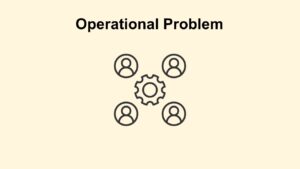
These two teams aren’t working well together. What can we do about it?
- [Customer] Who is in charge of decision making for each team?
- [Channel] How does the team normally communicate with each other? how frequently?
- [Product] What is the exact point of conflict between them?
- [Business] Is there any company guiding principles to decision making (eg. more weight should be given to the team whose decision will benefit the end customer)?
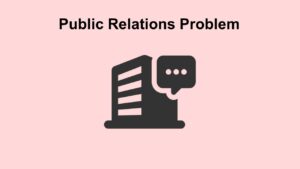
We are receiving negative press. What can we do about this?
- [Customer] Who is giving us negative press?
- [Channel] How is the negative press reaching us?
- [Product] What is the nature of the negative press?
- [Business] Is it valid? how is it affecting us?
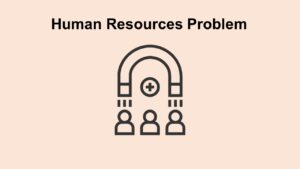
How can I get more talented people to join my firm?
- [Customer] Who are we calling ‘talented people’?
- [Channel] How are we reaching out ot potential talent? What is the message?
- [Product] What does our company have to offer to attract talented people?
- [Business] Is there something that sets our company apart from others?
A warning on asking too many questions
Note that you cannot go asking any question that come to your mind.
There must be a purpose to asking clarifying questions.
In other words, they must be hypothesis-driven.
For example, the reason I would ask “are other toy companies facing a similar profit crunch?” is to check whether the profit problem Jeff is facing is a problem singular to his firm or is an industry problem.
If the problem is only found in his company, we would need to drill down what they are doing wrong that other toy companies are doing right.
If, however, the problem is an industry problem, then we need to understand the key drivers of the industry and investigate what we can do better.
The last thing you want to do is bombard your client with random questions and annoy him.
It will be challenging to ask the right questions in the beginning.
I probably annoyed a whole lot of people with my pointless questions when I first started problem solving.
I promise you that with practice you will get better.
Step 3: Define the scope of solution
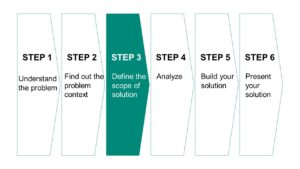
Great! You understood the problem context and now it is time to define the scope of solution.
Defining the scope of solution before analyzing the problem might sound odd, but this step is crucial if you want to save time and make your client happy.
First, align on what the expected solution should look like
What we think is the solution might not be the solution our client is expecting.
We might, for example, think that returning the company’s profitability back to normal might satisfy Jeff; however, this is nothing more than a guess.
Imagine Jeff’s goal is not only recover profitability but to double it. Yikes!
Now, if went on to build a solution focused on simply bringing the company back to profitability you would not only have disappointed Jeff but would have to do more work.
You might even have to start from scratch.
Therefore, before you get too excited trying to tackle the problem, make sure you understand what your client is expecting.
This expectation can be captured with questions ‘what’ and ‘when’:
- ‘What’ should be quantitative. For example, a ‘20% increase’, ‘more than $10 million’ or ‘double’
- ‘When’ should be a specific time. For example, ‘by July of 2023’ or ‘by Q1 of 2023’.
Going back to Jeff’s story, lets say you ask what his expected outcome looks like and he says the following:
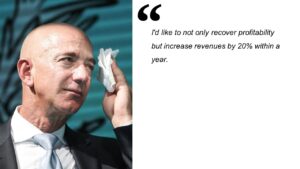
“I’d like to not only recover profitability but increase revenues by 20% within a year.“
Second, decide how you are going to tackle the problem
You need to first lay out your options and then prioritize which one of the options best addresses your client’s goal.
In our case that is recovering profitability and increasing revenues by 20% within a year.
We can make an easy game plan by using a 2 x 2 matrix.
A 2 x 2 matrix is nothing more than a decision support technique where we plot options on a two-by-two matrix.
The matrix diagram is a simple square divided into four equal quadrants, where each axis represents a decision criterion.

Depending on the nature of the problem, you can use one or more 2 x 2 matrixes.
The most common variables used are product and customer.
- Same product vs. new product (eg. manufacturing toys vs. manufacturing household utensils)
- Same customer vs. new customers (eg. B2B offline large toy distributors vs. B2C through our own online e-commerce site)
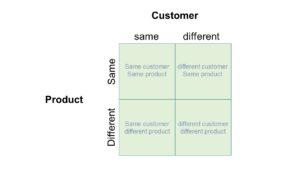
However, have in mind that you can use other variables as well.
Other qualitative conditions besides product and customer can be sales channel and business model.
Once you have a clear understanding of the options, it is time to prioritize.
You prioritize because you cannot do everything at once and must focus on the option that best addresses your client’s goal.
Looking back at Jeff’s case, we can logically assume that “new channel + new product” is not viable because it would probably take more than a year just to set up a new channel.
We can cross off this option off.

Given the tight time frame, I’d say the best option is to focus on what we already have.
I will buckle-down on “same channel + same product”
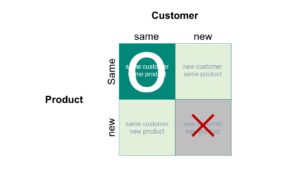
Step 4: Analyze
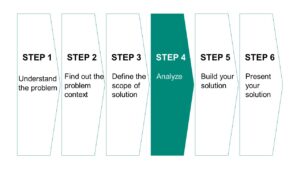
Awesome! We defined the problem, understood the context, and defined how we are going to tackle the problem.
In this step we will discover how to break down a problem in a structured way that can help us find where the real problem is.
Understand the 80/20 rule
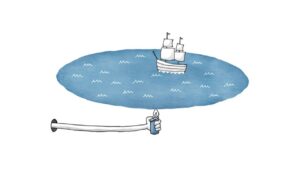
There is a famous saying used in consulting circles and it is “you can’t boil the ocean”.
In other words, you cannot look and analyze all the information out there.
It is important that you stay focused and study the information that is most relevant to finding the core problem and developing a solution.
This idea can easily be summed up by the Pareto Principle, also known as the 80/20 Rule.
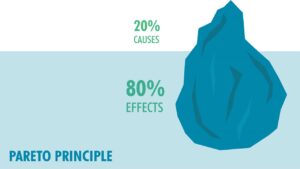
The Pareto principle states that, for many events, roughly 80% of the outcomes (or outputs) come from 20% of the causes (or inputs).
You can find the Pareto principle all around you – such as spending habits, wealth distribution, company revenue, and even infidelity in personal relationships.
Same goes for most problems.
The profitability problem Jeff is facing might come from a million reasons. What the Pareto principles tells us, however, is that roughly 80% of the outcome (profitability dip) is caused by 20% of the causes.
Usually the 20% of the causes is ONE core problem.
So rather than going around busily trying to find all the problems, we should aim to discover that ONE problem causing the most trouble.
Only after we find the core problem are we able to propose a solution that would meet Jeff’s expectation.
Now, lets find where the 80/20 is lurking.
Define key metrics
To find the 80/20 we need to break down the big problem into smaller problems.
When we break down big problems, it is helpful to start from a quantitative perspective.
The solution we are trying to look for is to find a way to recover revenue and increase by 20%.
So the key metric we should focus on is revenue.
Depending on the nature of the problem we can be looking at other quantitative metrics such as cost, site traffic, retention, NPI – the list is endless.
Break down the metric
Once we have the metric, it is time to break it down.
We know revenue can be divided into price x quantity sold.
In other words, if we want to know why revenue for the plastic action figure dropped, we need to find whether the problem was caused by a decrease in price, a decrease in quantity sold, or a decrease in both.
It is pretty straight forward.
Similar to how trees have branches, we call each of these possibilities a ‘branch’.
So revenue would be the tree trunk and there would be the ‘price’ branch and the ‘quantity sold’ coming out of it.
Our job is to find which branch is causing the trouble.

Below is a list of most common quantitative metrics broken down:
- Cost: fixed cost + variable cost, value chain
- Profit: revnue – cost
- Our market share: total market × our company’s market share %
- Site visit: organic + inorganic, by acquired channels
- Future revenue: current revenue × revenue growth
You get the point.
If you find this part challenging, I suggest you practice with guesstimation, also known as back-of-the-envelope calculations or fermi problems.
To learn more about this click here.
Take a hypothesis-driven approach to find the 80/20
To dig deeper into the root cause of the problem, you need to set a hypothesis.
If you remember, this is what we covered earlier in “Step 0: Talented Problem Solver’s Dirty Little Secret”.
So, to move forward with helping Jeff, you could ask the following:

“Well, to start things off, I’m going to start with a hypothesis that the drop in sales for plastic action figures is because we are selling less than what we used to. To see if this is true, I would like to know whether there was any change to product price and whether number of units sold for plastic action figures dropped over the same time period our profit took a hit.”
Jeff replied:

“Price is the same and you’re right. The number of plastic action figures we sold dropped quite dramatically which is causing the profit crunch.”
Great! now you can cross out the ‘price’ branch as a potential problem since we clearly know that this is a quantity sold problem.
Just as we closed one branch within ‘revenue’, it is time to close branches within ‘quantity sold’, because there can be hundreds of reasons why quantity sold dropped.
Let’s keep digging.
Keep digging, be structured, and close doors when needed
Think to yourself: ‘why could quantity sold for plastic action figures drop?’
When in doubt, it is always a good idea to set a hypothesis that seems reasonable.
As I recommended earlier, try digging into customers first. From experience, almost 80% of all problems can be found by first digging into customer needs.
So, you set the following hypothesis:

“I hypothesize that quantity sold for plastic action figures dropped because they are out of style. Kids don’t enjoy playing with them any more. In order to prove if I’m right, I would like to know whether our competition is also selling less of their plastic action figures.”
Jeff doesn’t have an answer for your question so you gather a team and start digging for facts.
During your research you discover the following:
- More children actually like plastic action figures more than fluffy dolls.
- Most children end up buying plastic action figures from our competition XYZ Toys.
This is surprising news!
It is both good and bad.
Seems that demand for plastic action figures is booming which is great. Problem is that children aren’t buying OUR product.
Time to readjust our hypothesis:


“Interesting, it seems that demand for plastic action figures is high but our revenue is in decline… We might be selling less because our product is worse than our competition or because there is some problem in the way we are selling them(sales channel). I hypothesize that the core problem is product quality. If the quality of our action figures match or exceed that of our competition we would sell more. To check if this is I am right, I would need to understand how our products differ in terms of price and quality.”
Great pivot!
You ask your team to go buy XYZ Toy’s plastic action figures.
Next morning you find 5 different action figures from XYZ Toy on your desk.
You eagerly open each box expecting to see what makes XYZ Toy’s action figures so special but you find nothing.
They are priced the same and they look just like ours!
Time to readjust our hypothesis once more:


“Clearly my hypothesis was incorrect. The reason we are not making higher sales in plastic action figures is not because our product is inferior to our competition. Let’s shift gears and look at how we sell our product(sales channel). I hypothesize that we are missing an opportunity because of the way we sell our products. To test my hypothesis, I would like to compare Toy Company’s sales channel versus our competition at XYZ Toys and also how our customers buy these toys”
You spend a couple days with your team to collect data.
You are surprised with your findings:
- Jeff’s company only sells to large offline toy distributors while XYZ Toys sell both offline and online through their own e-commerce channel
- 80% of all sales made by XYZ Toys is through their e-commerce channel
- Young couples who usually buy our plastic action figures in offline stores are afraid of visiting crowded areas because they fear they might get infected by Corona so they shifted to purchasing through online channels
And there you have it! your 80/20.
The core problem was sales channel. The reason Jeff’s company wasn’t able to capture the booming demand for plastic action figures was because we did not offer our product on the sales channel our customers wanted.
Step 5: Build your solution
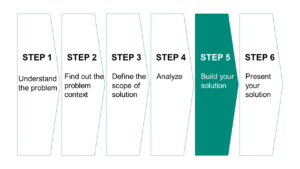
Hey! You’ve made it! Solution building is easier and more fun.
Now that you identified the core problem, it is time to provide a valid solution.
Map out all possible solutions
The solution must flow from the core problem we discovered in the previous step.
You know the problem is our target customers, young couples, not visiting offline stores.
You could ask the offline stores where they sell our products to make the stores squeeky clean, but there are thousands of stores run by hundreds of owners.
Plus, they’d already be doing the best they can.
The solution, therefore, would be to follow our competition and build our online presence to market our product to our target customers.
There are three ways we could approach this:

- M&A option: We Love Toys could acquire a similar e-commerce online platform and compete against XYZ Toys. Basically, acquiring a company that is doing what we want to do.
- Green field option: We Love Toys could hire engineers and build an e-commerce online platform from scratch and market the platform to our target customers. Basically, building what we want to do by ourselves.
- Joint venture option: A third and last option could be to collaborate with a company who already has an e-commerce platform targeting our core users and share both revenue and cost. Basically, partnering with a company to do what we want to do.
The most important factors to consider when choosing which option to go with are usually: speed, controllability and financial risk:
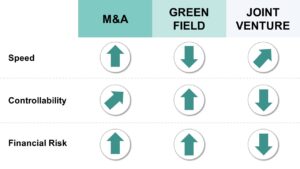
Given that our mission is to double revenue in 1 year, the M&A approach seems most favorable.
Forecast expected outcome
Now that we identified the solution, M&A an existing e-commerce online platform, it is time to understand the impact this decision will have on We Love Toys’ financials.
This step is referred to as financial modeling.
It is to use excel to determine whether it is indeed possible to meet our client’s goal.
In this case recovering revenue and increasing it by 20%.
If you were able to easily follow the step by step structured break-down of the problem up to now, making an excel model to forecast revenue and cost will be quite straightforward.
Financial modeling is important because without it you would never know whether the solution you suggested is actually viable.
Depending on the outcome, Jeff will have to either convince his boss to invest hundreds upon thousands of dollars to acquire an e-commerce online platform, or find an alternative way to meet his goal.
I will cover financial modeling at a different time.
Just note that this step is important to prove that the solution you bring to the table is indeed a good solution.
Step 6: Present your solution
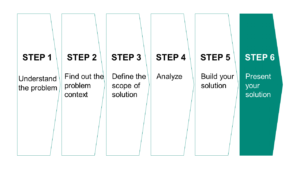
How you present your solution determines good work from bad work
Imagine spending hours coming with your perfect solution.
You make a powerpoint deck summarizing your key points, set a date with your client and beautifully present!
However, instead of being showered with praise and champagne, you see your client in his seat looking confused.
That would be a real nightmare.
All the countless hours you spent coming up with the solution down the drain!

You know the information you have is golden and that it is a real solution that could solve your client’s problem.
But the client simply does not seem to understand how valuable it is.
Before you start blaming him for being blind to your brilliance, make sure you are presenting your findings the right way.
There are four factors to consider before you present your finding.
- Medium – presentation
- Presentation flow
- Slide structure
- Slide design: chart, color, font, spacing
Medium – presentation
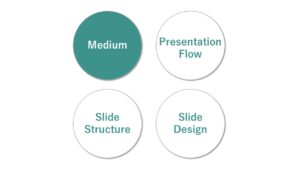
To present your solution or key findings, Powerpoint is usually much better than Microsoft Word or any other text-based medium.
Microsoft Word is great to store valuable text-based information but falls behind Powerpoint in 3 critical ways:
- It assumes the reader has 100% attention available
- It is difficult to know what the key message is
- Microsoft Word is not optimized for images and graphs
There is one thing you must know about people in general, including myself.
It is that people are lazy.
Most people prefer to take the escalator instead of stairs, drink ready-made orange juice than having to squash the orange themselves, and hop on a car than walk.
Whereas Word requires 100% of the viewer’s attention, Powerpoint makes it easier for them to understand the key message with minimal effort.
Also, it is much easier to visualize data as an image rather than raw data, and Powerpoint is great for doing just that.
The viewer does not understand the problem and solution as well as you do so it is best to spoon-feed your findings.
There is no better spoon than Powerpoint.
Presentation flow
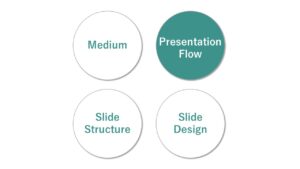
The best way and only way you should present is to state the conclusion first and provide supporting evidence later.
Never make the mistake of going through all the facts you had to go through to find your solution. Sorry, but nobody cares how hard you worked.
The purpose of your presentation is to present the solution. Supporting evidence can come later.
Tell your audience exactly what they want to hear: a crisp and clear answer to their problem.
The presentation flow should reflect this.
Solution and conclusion of your findings should come in the first few slides, followed by the evidence, possible risks and next step in the later slides.
Note that making the presentation flow is much more important than the actual designing of the slides. I can’t emphasize this enough.
This means that a good +50% of your total time should be dedicated to hammering out your key message, how you are going to deliver it, and how to present your evidence in a way that is logical and easy to understand.
The time you take to decide what font, color and pictures to use should take only a minuscle fraction of your time.
Your presentation should flow like water and one slide must be connected with the preceding slide in a structured way.
Your objective is to have the viewer nod at each screen you show him.
Rather than to start building the presentation flow directly on Powerpoint, I would highly recommend that you draw the structure on paper first.
We often refer to the process of designing the framework of your presentation on paper as ‘ghosting’
You might think of this as a waste of time but I promise you this will save you way more time than tackling the Powerpoint head on.
Slide structure

Once you have the presentation flow drawn out, building each slide should be a breeze.
The 3 key principles to structure your slides are:
- Each slide should convey one message
- The key message should be summarized in the Head Message on the top of the slide
- The slide body should provide the evidence that supports the Head Message
Design: chart, color, font, spacing
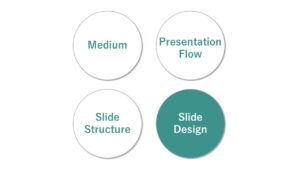
Finally! time to make your slides you pretty and neat.
Please remember that this is the part that is least important.
If the message you need to deliver is poorly structured, lacking logic, or phrased in a way that is difficult to understand, your beatiful slides will have 0 value.
Below are tips on how you can shorten your time to design your slides.
Spacing

You want all the information to be neatly organized with enough white space to make it easy for your audience to understand the slide’s content.
The best way to make sure you get it right is to set ‘guide’ in powerpoint.
This is how you do it:
- Open your powerpoint and go to ‘view’ on the menu, tick off ‘guides.
- You will have two guides appear on your screen. One line goes through the screen vertically and another horizontally.
- Click ‘ctrl’ on your keyboard and drag the grey guideline to copy. Below are the recommended guide frame you should follow:
- Center: 0.00
- Far left: 14.50
- Far right: 14.50
- Left: 1.50
- Right: 1.50
- Bottom: 7.00
- Far top: 5.50
- Top: 3.50
* Tip 1: you cannot ‘ctrl + z’ if you touch the guides. Make sure if you accidentally move the guides to reposition it.
* Tip 2: try never to trespass these lines
You can use both boxes in the body to fill in evidence to support your Head Message.
You could also use both boxes as a single box as well.
Chart
Charts are powerful visual tools to effectively communicate key insights in image form rather than numbers.
Specific charts should be used to convey a specific message.
These are the charts most often used along when when you should use them.
1. Stacked bar
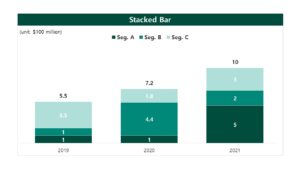
- when? show a trend
- example? revenue growth, market trend (segmenting is optional)
2. 100% stacked bar

- when? % change is important
- example? revenue composition, channel mix (online/offline)
3. Cluster bar
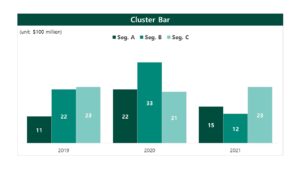
- when? survey result
- actually not used that often, confusing, prefer stacked bar
4. Line graph
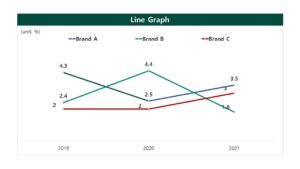
- when? change in order of entity
- example? want to show market share of company C will do better in the future
- Tips: hard line is fact, dotted line is forecast
5. 2 Axis
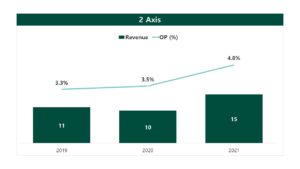
- when? want to show number and percentage
- example? company’s revenue and ebit rate, revenue and COGS rate
6. Waterfall
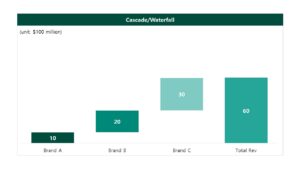
- when? show data sequentially
- example? revenue is composed of A, B, C and totals D
- sophisticated
Color
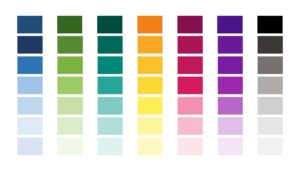
Below are the 3 principles on colors:
1. Use color sparingly – all colors must hold a meaning
- Mostly use black as default color
- Use another base color that you will use to make graphs and diagrams
2. Have a color palette ready and use spoit
- Have a color palette open and use spoit when you want to use add color
3. Use contrasting color to emphasize
- Use contrasting colors to highlight a message
Font
- For official document arial, common and doesn’t crack
- Head message is 28 or 26
- Mid header is 18 or 16
- Main bullet is 14 or 12 (minimum)
- Sub-bullet is 12 or 10 (minimum)
[Bonus] Researching the right way
Things you should know before you begin
After you set your hypothesis, you need to go through relevant data to see if you are right or wrong.
Below are the 4 principles you should keep in mind while hunting for data:
Attitude
You need to be extremely gritty. Gritty comes from the word grit and means persistence.
Forget trying to find relevant information by simply clicking on the first few links you find on google.
You need to be ready to go much deeper than that.
You must hunt for data with the same passion a starved wolf eyes a plump deer.
Search on the web or reach out to others who you think might have an idea about where to look.
The attitude you must have is ‘if I don’t find this information NOBODY will’.
Source
One of the most reliable data sources out there is data compiled by the government.
The data may not be 100% accurate but that is accurate as you can get.
If you find evidence backed by some government institution, pat yourself on the back and move on to your next hunt.
Precaution
Avoid bias when conducting customer research.
Make sure that the people you are surveying or interviewing are the people you actually want to understand.
Many times we are too invested in finding people that we pay less attention to figure out whether they are actually the people we need to survey.
Data modeling
If you did all that is possible to find relevant data to support your message but was unsuccessful, then you need to make it up yourself using logical assumptions.
Fabricating data?!
Well, yes…
But it should be based on logical assumptions, and you should point out those assumptions so that others know that they are your assumptions.
Don’t ever make the mistake of pretending your assumption-based data as legitimate valid data.
That kind of dishonesty will end up biting you on the butt later in the worst way possible.
Where to find data
If you searched for any kind of data in the past, then you would know that the exact data you want costs $5,000.
Money, unfortunately, does not grow on trees and not many of us can chuck a couple thousand bucks.
Below are some ways you can find valuable data without having to break your piggy bank.
1. Official data: reports (filetype: pdf), news back track, government data
The best data are the ones you can find in company reports, industry reports, and government statistical database.
These sources are considered highly reliable so you can stop your search if you find relevant data from any of these sources.
Also, if you are researching for a particular industry, there is usually an association, gathering, or official forum where industry leaders and experts come together to exchange latest trends and news.
Those association websites are a goldmine of valuable data.
There are millions of these associations.
For example, there is even an association for industrial heating equipment. If you dig deep enough you can find anything.
Another easy way to hunt for official reports if you type ‘filetype: pdf’ followed by your search terms in google.
PDF files usually hold valuable information over other types of files.
2. Customer research
If you need to learn about a new industry or need to understand customer needs on a granular level, customer research is an amazing source of valauble information.
There are usually three types of customer research:
Survey
A little warning about survey is you need to be sure that the people you are surveying are the right people.
For example, if you want to understand how people use your app in the US, you are not going to survey people from England.
Another point you should be wary about is to design the survey questions so that they can be easily answered.
If you ask a question like “how many times did you have coffee this month” you will get an inaccurate reply.
I mean, think about it.
Do you know how many coffees you drank this past month?
The survey questions must be simple, to the point, and require minimal brain power.
If not, you will get a fabricated answer that is not reliable, thus, not meaningful.
In-depth-interview
Also known by it’s abbreviation IDI, in-depth-interview is a great way to quickly understand customer behavioral pattern.
The great thing about IDI is that you can have a direct understanding of how your users or customers do certain things.
A helpful tip to hypothesis-driven thinking is to pretend you are the customer yourself.
If you need to increase sales for plastic action figures, imagine are the parents who have to buy the toy.
Thinking from the customer’s point of view becomes easier after an IDI session.
Focus-group-interview
Also known as FGI, focus-group-interview is slightly different from IDI.
Rather than interviewing one person in depth, for FGI to work you need a moderator who facilitates conversation among a group of people on a particular subject.
The moderator’s job is very important since she needs to make sure that the people in the room feel comfortable.
It is also important for the moderator to give all members an equal chance to speak to avoid having one biased view dominate the conversation.
Expert interview
Expert interview is a great way to gain key insight from a more business aspect.
If you have absolutely no knowledge about a certain industry and you need to learn fast, expert interview is the best option.
There are some professional firms such as GLG and Alpha Site that connect you with experts in the field of your interest, but this option is ridiculously costly.
A cheaper way would be to use Linkedin.
You search for relevant experts in the field you are interested in on Linkedin and send them a private message.
You won’t get a reply from every one of them but for every 10 messages you send, you can hope to receive at least one reply.
Again, think of yourself as a hungry wolf and the only way you will feel satiated is with high quality data.
–
All right, that’s a wrap!
There you have it: my ulimate guide to solve any problem.
I hope you enjoyed reading this blog.
Now I’d like to hear your thoughts:
What’s your #1 takeaway lesson from this guide?
Or maybe you have a question about some parts.
Either way, let me know in the comment section below.

